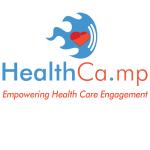Data Drive Efficient Market Transactions
 Tuesday, October 16, 2012 at 2:44PM
Tuesday, October 16, 2012 at 2:44PM Much of what we do in our business lives can be reduced to a market model. We buy, sell, arrange meetings, seek funding, invest, hire, travel, …. You get the idea. All of these activities require connecting parties to each other and, if done appropriately, they result in making the best match between parties.
In many transactions, the price of a good or service is the key variable on which to make a match. In others, price may not be a major factor at all. In fact, the two economists who just won the Nobel Prize in Economics specialize in making markets in areas such as organ donations or matching medical residents with hospitals, where price is not the central variable to match.
Making Markets was the topic of one of the sessions I moderated last week at the Data Content 2012 conference. Data Content has been at the forefront of data publishing advancements over its celebrated 20 year history. In the Making Markets session we focused on the most common and well-understood type of B2B transaction: connecting buyers and sellers.
The three companies represented on the Making Markets panel help connect buyers and sellers in specialty markets: CapLinked in the investment sector, by bringing together potential funders and companies seeking funding; The Gordian Group in the construction sector by matching contractors to job order contracts; and Fabricating.com in the custom manufacturing segment by matching industrial companies with manufacturers of specialty parts. The speakers emphasized how operating in the “neighborhood” of the transaction creates an opportunity to collect transaction-related data which in turn add more value to the match-making process—creating a virtuous circle.
Other sessions at Data Content touched on how data collection and data management are only a differentiating factor when hard work is put in to cull together hard-to-aggregate data or clean messy data. If it’s too easy to compile the data, you won’t have a defensible resource. But that’s perhaps the most distinguishing benefit of becoming a market-maker: the transactional data that is generated by the match-making process become a unique data asset that cannot be replicated. These secondary data can be organized and used for industry benchmarks and can be fed back into the matching algorithms to build a continuous improvement loop.
As pointed out by my colleague Russell Perkins in his closing presentation at Data Content, in the era of Big Data, data produced by specialty publishers may just be the special ingredient that helps “solve the ‘ last mile’ problem to make Big Data actionable”. In particular, the trusted and verified contact information supplied by publishers can help make the final connection between buyers and sellers. In the Making Markets session, we saw ample evidence that structured data supplied by B2B data publishers can be put to use to drive efficient transactions throughout the match-making process.
 DataContent,
DataContent,  b2b,
b2b,  bigdata,
bigdata,  events
events 


